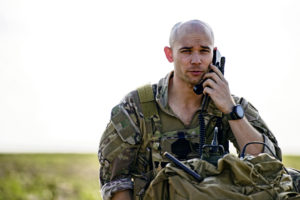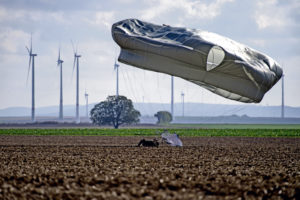
FLÖRSHEIM-DALSHEIM — Airmen assigned to units within the 4th Air Support Operations Group and 435th Contingency Response Group conducted a joint airborne insertion over Alzey Dropzone, Sept. 30.
The training allowed Joint Terminal Attack Controllers, Defenders, and other air support and contingency response Airmen to hone the skills needed to conduct operations anywhere in the European theater.
“What we did today is a capability we can provide that enables Agile Combat Employment on the front end,” said Lt. Col. Justin Banez, 2nd Air Support Operations Squadron commander. “We’re able to get JTACs into an austere area, establish a potential airhead and report on potential targets, which then enables the follow-on forces to come in.”
An airhead is a designated area used to continue air operations in contingent environments, which is exactly what the 435th Air Ground Operations Wing is trained to do. Practicing this capability allows the 435th AGOW to sharpen their ability to integrate their Airmen’s skill sets, providing a more cohesive force.
“We leverage this capability to assure our NATO partners and joint partners that we can get anywhere within the European theater and provide a credible deterrent,” Banez said. “Today’s exercise was a fine example of being able to leverage capability across U.S. Air Forces in Europe, bringing together the 37th Airlift Squadron, who provided us the lift capability, and then the air-ground integrators from the 435th AGOW.”
For contingency response and Tactical Air Control Party Airmen, airborne insertion is simply a stepping stone for operations. The real job happens once they touch down.

“What we’re doing today is testing our long-range communications and seeing how fast we can set up after our airborne operation,” said Staff Sgt. Trenten Collins, 2nd ASOS JTAC. “Jumping in is just one way to get to where we’re going. Today we jumped in, hit the ground, and had our high frequency antenna up and long-haul communications with TACPs from across the world.”
To get the most out of a training opportunity, these units ensure they maximize their time in the field.
“We always combine our training missions,” Collins said. “We try to knock out as many training objectives as possible. If we’re going to do a jump, we’re definitely going to try and test out our combat capabilities. Today was a success.”
By continuously practicing their ability to execute anywhere at any time, the 435th AGOW ensures the U.S. Air Force is both lethal and ready.







